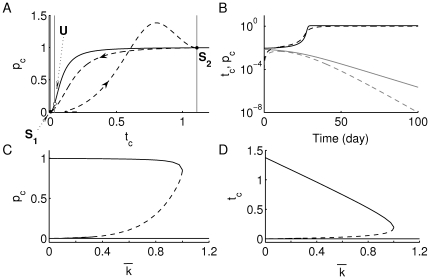Figure 2. Increasing T-cell avidity (decreasing  ) induces bistability.
) induces bistability.
(A) The phase plane of the scaled version of system (2a)–(2b) (see Supplementary Material S1), displaying the  - and
- and  -nullclines for
-nullclines for  (i.e. for a high level of T-cell avidity). The three vertical gray lines are the
(i.e. for a high level of T-cell avidity). The three vertical gray lines are the  -nullclines, while the Hill-like black line is the
-nullclines, while the Hill-like black line is the  -nullcline. Stable steady states
-nullcline. Stable steady states  and
and  are shown as black dots, while the unstable steady state
are shown as black dots, while the unstable steady state  is shown as a white dot. The dashed line traces the time-dependent level of T and plasma cells obtained from the scaled version of full one-clone model (1a)–(1f) superimposed on this phase plane (the arrow-heads represent the direction of flow). (B) The time evolution of
is shown as a white dot. The dashed line traces the time-dependent level of T and plasma cells obtained from the scaled version of full one-clone model (1a)–(1f) superimposed on this phase plane (the arrow-heads represent the direction of flow). (B) The time evolution of  (solid) and
(solid) and  (dashed), approaching the autoimmune (black) and healthy (gray) states, depend on the initial level of T cells (
(dashed), approaching the autoimmune (black) and healthy (gray) states, depend on the initial level of T cells ( ). The bifurcation diagrams of (C)
). The bifurcation diagrams of (C)  , and (D)
, and (D)  with respect to
with respect to  are shown displaying the stable steady states
are shown displaying the stable steady states  and
and  in solid lines and the unstable steady state
in solid lines and the unstable steady state  in a dashed line. As demonstrated in Supplementary Material S1, bistability is only observed for
in a dashed line. As demonstrated in Supplementary Material S1, bistability is only observed for  , while at
, while at  ,
,  and
and  merge together at a saddle node bifurcation point, leaving the healthy state
merge together at a saddle node bifurcation point, leaving the healthy state  to become a global attractor for
to become a global attractor for  (i.e. for a low level of T-cell avidity).
(i.e. for a low level of T-cell avidity).

